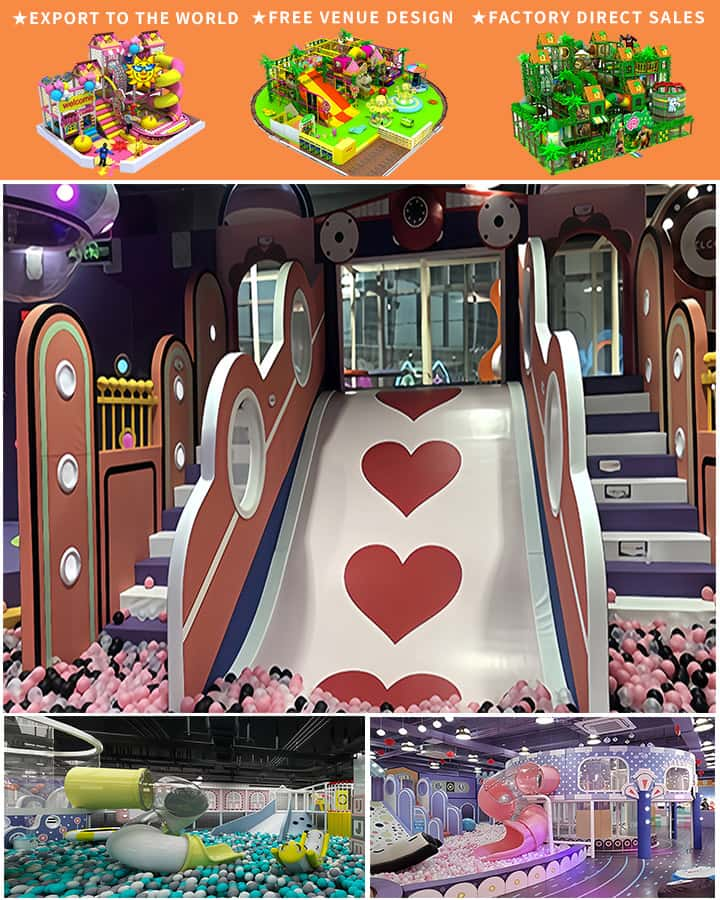Designing an indoor play area for kids is an excellent way to ensure they have a fun, safe, and engaging space where they can explore, learn, and develop essential skills. Whether you’re setting up in a living room, basement, or a dedicated playroom, the right setup can transform any space into an imaginative wonderland. Let’s dive into some key elements that will help you create the ultimate indoor play area for your children.
Safety First: Ensuring a Safe Environment
The primary consideration when setting up an indoor play area is safety. Here are a few steps to ensure a secure environment for your little ones:
Soft Flooring: Choose soft flooring options like foam mats, rubber tiles, or carpeted areas to cushion falls and protect tiny feet from cold, hard surfaces.
Child-Proofing: Secure furniture, cover electrical outlets, and remove any small objects that could pose a choking hazard. Use corner and edge bumpers on furniture to prevent injuries.
Appropriate Supervision: Always keep the play area within sight and easily reachable, ensuring that older children who are playing independently are still safe.
Furniture and Organization
Selecting the right furniture and organizing the space effectively will make the play area functional and aesthetically pleasing.
Multifunctional Furniture: Consider pieces that serve multiple purposes, such as storage benches, fold-out desks, or bookshelves that double as seating.

Organizational Tools: Use bins, baskets, and shelves to keep toys organized and within easy reach. Clearly label these containers so children can clean up and find what they need with minimal assistance.
Comfortable Seating: Incorporate kid-sized chairs, bean bags, or floor cushions to create a cozy reading nook or a space for imaginative play.
Engaging Activities and Toys
An array of activities and toys will keep kids entertained and encourage creativity and learning.
Educational Toys: Include puzzles, building blocks, and age-appropriate science kits to stimulate cognitive development and problem-solving skills.
Arts and Crafts Station: Set up a designated area for drawing, painting, and crafting. A magnetic whiteboard wall or an easel can also provide endless hours of creative expression.
Interactive Play: Incorporate interactive elements like a play kitchen, dress-up clothes, or pretend tools to foster role-playing and social skills.
Physical Activity: Leave space for physical play by including items like a mini trampoline, tunnel crawl, or balance beam, which can help burn off energy and enhance motor skills.
Personalizing the Space
Make the play area unique and appealing by adding personal touches.
Decor and Themes: Decorate the space with themes your child loves, whether it’s their favorite TV show, animals, or a specific color scheme. Wall decals, posters, and themed curtains can enhance the ambiance.
Involve Your Child: Allow your child to contribute ideas and participate in decorating the space. This involvement will make them feel empowered and more excited about using their special area.
Maintenance and Upkeep
Finally, maintaining the play area is crucial for keeping it a welcoming and enjoyable spot.
Regular Cleaning: Establish a routine for cleaning toys, wiping down surfaces, and vacuuming or sweeping the floor to keep germs at bay and maintain hygiene.
Rotate Toys: To prevent boredom, rotate toys periodically. Store some toys out of sight and bring them back after a few weeks to reignite interest.
Inspect Regularly: Check the play area regularly for wear and tear, ensuring that all equipment remains safe and functional.
By focusing on these key aspects, you can create an indoor play area that is not only safe and organized but also brimming with fun and educational opportunities. With a little creativity and planning, your home can become a delightful playground where your children can grow, learn, and imagine without limits.




